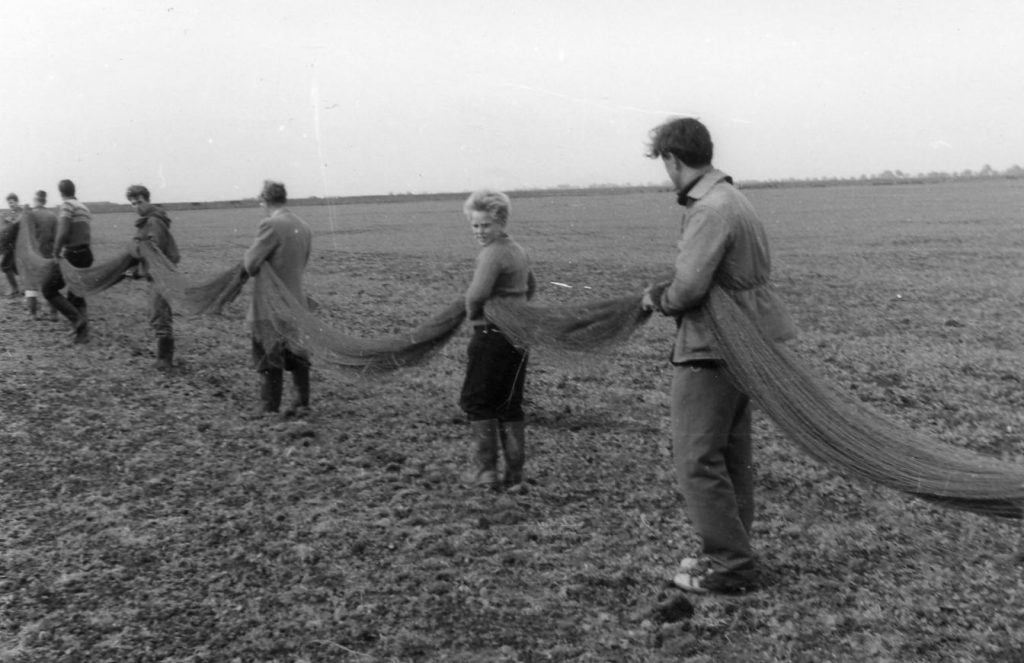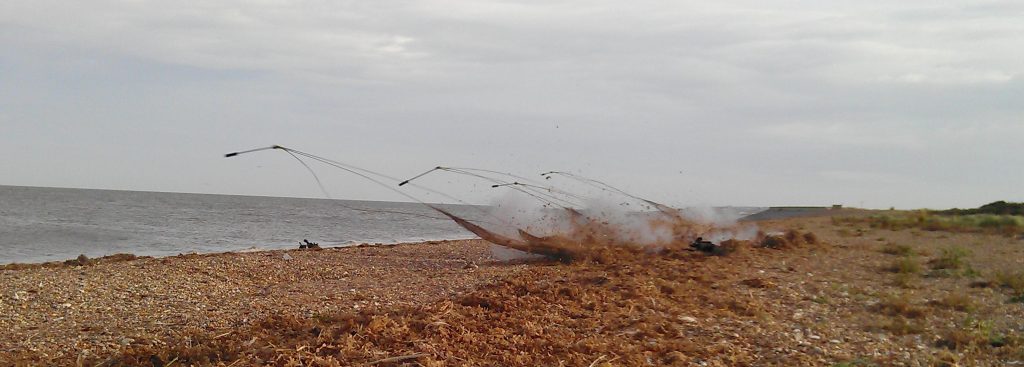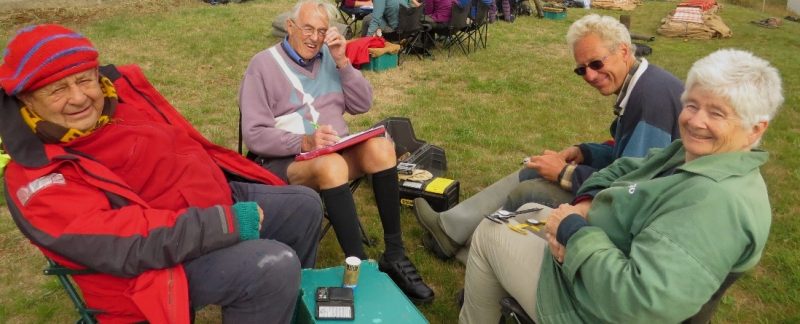Members of the Cambridge Bird Club first started taking interest in the waders using The Wash in the early 1950s. Initially, this interest focused around monitoring and counting the wader populations in winter, but soon included catching attempts using mist nets and clap nets. The Wash Wader Ringing Group was formed during the summer of 1959 when a team, including Clive Minton, persuaded Peter Scott of the Wildfowl Trust to lend them their rocket nets to try catching large groups of waders on ploughed fields; the Group took their first rocket net catch, at Terrington in Norfolk, on 18 August 1959, exactly 60 years ago today.

Back then, the group consisted of what was described as ‘a loose assemblage of experienced ringers brought together for brief periods in order to use the rocket-netting equipment of the Wildfowl Trust for the mass capture of waders‘. The group were only able to catch during periods of spring tides in late summer, when large groups of waders sat out high tide on ploughed fields where the nets could be set.
During the first catch in 1959, 1,129 new birds were ringed and three previously-ringed birds were also caught. These three retraps were all Dunlin, one of which had originally been ringed in Wisbech (Cambridgeshire) 18 months previously. The other two were foreign-ringed birds; one ringed in Finland in September 1958, the other in Copenhagen, Denmark in July 1959, just under a month before it was caught at Terrington. The capture of 779 Dunlin during this catch was astonishing considering that fewer than 3,000 had been ringed elsewhere in Britain between 1909 and 1959, presumably due to a lack of opportunity and catching equipment. The foreign controls were less surprising considering that 50,000 Dunlin had been ringed in Scandinavia since 1946.
This one catch generated a surprising number of recoveries. The single Grey Plover ringed that day was found at the same location in December of that year. Five of the Curlew were reported over the next year or so, the farthest having travelled 16 miles to Thornham (Norfolk). Two Redshank were also found, one at Terrington later that month and one at Alkborough (Lincolnshire) the following summer. Two Dunlin were recovered, one caught alive in Sussex in April 1960, the other shot in Estonia in August 1961, the first record of a British-ringed Dunlin in the East Baltic region.
The 1959-1963 Group report notes that the early catches that the group made were ‘exploratory and primarily concerned with adapting the technique and equipment designed for goose-catching to the different problems of wader-catching‘, that the accommodation for the summer trips in the first two years was a caravan, and that both the BTO President and Ringing Officer were present during two of the first three summer trips, acting as observers.
That first catch paved the way for today’s cannon netting. Once catching with rocket nets became tricky due to difficulties obtaining the cordite needed to propel the nets, the Group designed and built their own cannon nets (fired by black shotgun powder) which came into operation in July 1967 and remain in use, with few changes from that original design, today.

Much has changed since these early days of WWRG, but the desire to study the species that commonly occur in and around The Wash remains the same. Back then it was noted that the Group’s ‘most obvious aim must be to catch Knots, godwits and other species not yet ringed in large numbers anywhere‘ and that ‘since ignorance of the timing of moulting is nearly complete, further observations of this kind will be of great interest‘.
Today, WWRG has a priority list of 11 species that we target in order to study patterns of migration and origins of each species and any known populations, the importance of The Wash to waders, both as a whole and individual sub areas within The Wash, long-term population dynamics and biometrics. Knot and both godwit species all still feature prominently on that list.
Since that first catch in 1959, WWRG has caught just under 353,000 birds and has provided training to numerous other ringers, both here and abroad, in wader catching techniques (using both cannon nets and mist nets) and methods for identifying, ageing and sexing waders. The data collected have not only improved our understanding of moult, but have also taught us about where birds go, how they use the habitats in the Wash and have been used to highlight the importance of The Wash’s protected status in the face of various development proposals.
Hundreds of ringers have attended catches at The Wash or been members of WWRG over the years, and each and every one of them has played a part in the Group’s history. However, those initial pioneering ringers, including one of the Group’s founders Clive Minton and member Daphne Watson, deserve a special mention. It is thanks to them that we have been able to study the birds on The Wash for so long and we owe them a huge debt of gratitude and a massive thank you.
Here’s to the next 60 years!
Cover photo: l-r Clive Minton, Mike Watson, Steve Dodd, Daphne Watson during the September 2018 WWRG trip. Photo by Cathy Ryden.

